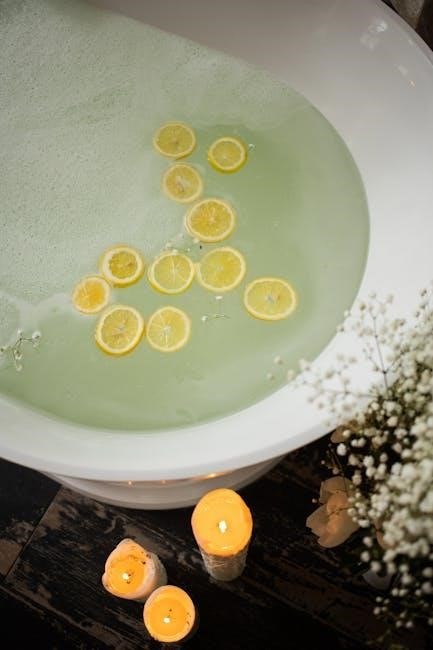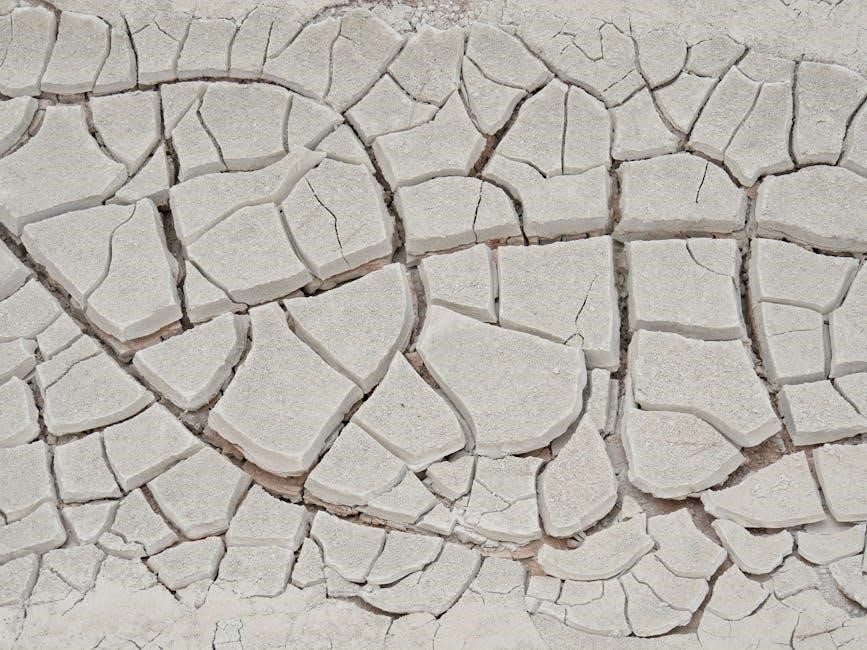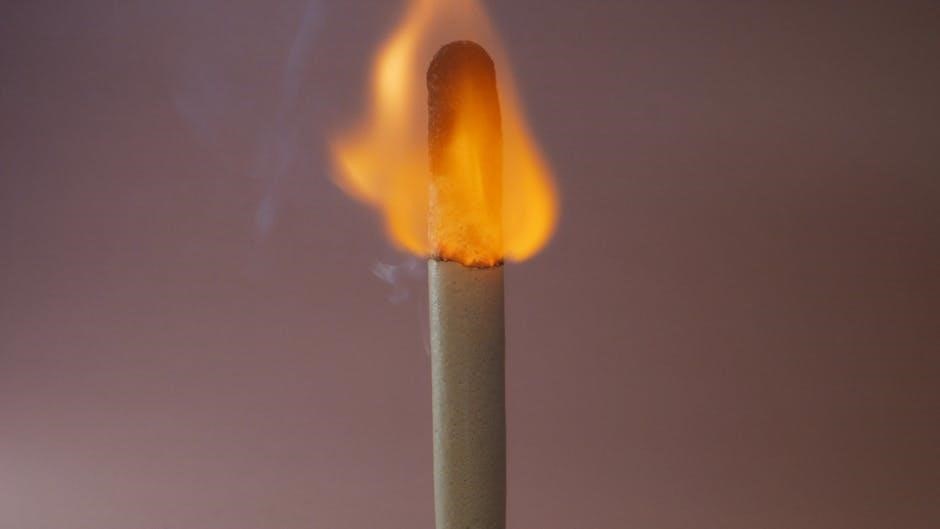hot tub chemicals guide
Hot tub chemicals are essential for maintaining clean, safe, and enjoyable water. They include sanitizers, pH balancers, and stabilizers, ensuring optimal water quality and user comfort always.
Why Hot Tub Chemicals Are Essential
Hot tub chemicals are vital for maintaining clean, safe, and comfortable water. They prevent bacteria growth, ensuring a hygienic environment for users. Sanitizers like chlorine and bromine eliminate pathogens, while pH balancers and stabilizers maintain water quality. Neglecting these chemicals can lead to cloudy water, skin irritation, and even health risks. Regular use of chemicals prevents equipment damage and extends the lifespan of your hot tub. They also neutralize contaminants introduced by users, such as sweat and lotions. Proper chemical use ensures a refreshing and enjoyable soaking experience. Without them, the water can become unsafe and unpleasant, making maintenance more challenging. Balancing chemicals is crucial to avoid overuse, which can irritate skin or damage equipment. Thus, hot tub chemicals are indispensable for safety, comfort, and longevity.
Overview of Common Hot Tub Chemicals

Hot tub chemicals include sanitizers, pH balancers, stabilizers, shocks, and scale preventers. Sanitizers like chlorine and bromine kill bacteria, while saltwater systems offer an alternative. pH balancers adjust water acidity, and stabilizers protect sanitizers from sunlight. Shock treatments oxidize contaminants, and scale preventers reduce mineral buildup. Test kits are essential for monitoring levels. Accessories like filters and cleaning products also play a role. Each chemical serves a specific purpose, ensuring safe and clean water. Proper use extends equipment life and enhances user comfort. Understanding these basics helps maintain a healthy and enjoyable hot tub experience. Regular testing and adjustment are key to balancing these chemicals effectively. They work together to create a safe and relaxing environment for users. Always follow guidelines for correct dosages and application to avoid issues.

Sanitizers for Hot Tubs
Sanitizers like chlorine, bromine, and saltwater systems keep hot tub water clean and safe by eliminating bacteria and contaminants, ensuring a healthy and enjoyable soaking experience always.
Chlorine as a Sanitizer
Chlorine is a widely used and cost-effective sanitizer for hot tubs, effectively eliminating bacteria and contaminants. It comes in forms like liquid chlorine or granules, such as dichlor or cal-hypo. Proper dosing is crucial to maintain safe levels, typically between 1-3 ppm. Overuse can cause eye irritation and skin discomfort, while underuse may lead to bacterial growth. Stabilizers like CYA are often used to protect chlorine from sunlight degradation, extending its effectiveness. Regular testing ensures optimal levels, and shock treatments may be needed to remove combined chlorine, which can cause unpleasant odors. Chlorine’s affordability and effectiveness make it a popular choice for many hot tub owners, though it requires careful management to maintain water quality and user comfort.
Bromine as a Sanitizer
Bromine is a popular alternative to chlorine for sanitizing hot tubs, known for its gentler effect on skin and eyes. It is effective at killing bacteria and oxidizing contaminants, making it a reliable choice for maintaining clean water. Bromine is typically used in tablet or granule form, which dissolve in the water to release the sanitizer. The recommended bromine level is between 3-5 ppm, and it is often used with a bromine feeder or floater to maintain consistent levels. Unlike chlorine, bromine does not produce a strong odor and is less corrosive, making it a preferred option for many users. However, bromine can be more expensive than chlorine and requires regular testing to ensure optimal levels. It is also less affected by sunlight, making it a good choice for outdoor hot tubs. Proper management of bromine levels is essential for safe and enjoyable hot tub use.
Saltwater Systems for Sanitization

Saltwater systems are a modern and popular alternative to traditional sanitizers like chlorine and bromine. These systems use salt to naturally produce chlorine in the water, creating a gentler and more sustainable sanitizing process. By converting salt into chlorine through electrolysis, saltwater systems maintain clean and safe water with lower chemical levels. This method reduces the strong odor and skin irritation often associated with chlorine. While the initial investment in a saltwater system can be higher, it offers long-term benefits, including reduced chemical usage and easier maintenance. Saltwater systems are ideal for hot tub owners who prefer a natural approach to water care and want to minimize the use of harsh chemicals. They are also a great option for those with sensitive skin or who desire a spa-like experience at home.

Maintenance and Testing
Regular maintenance and testing are crucial for safe and enjoyable hot tub use. Daily checks, weekly routines, and monthly tasks ensure balanced pH, alkalinity, and sanitizer levels, preventing issues.
Daily Maintenance Tasks
Daily maintenance is vital for keeping your hot tub clean and safe. Start by testing the water’s pH and sanitizer levels using a reliable test kit. Adjust these levels as needed to ensure they fall within the recommended range. Add sanitizers like chlorine or bromine to maintain proper disinfection. Skim the surface to remove floating debris and wipe down the edges to prevent dirt buildup. Check the filter and clean it if necessary, as a dirty filter can strain the system. Finally, inspect the hot tub for any visible signs of contamination or wear. Consistency in these tasks ensures optimal water quality and prolongs the lifespan of your hot tub. Regular attention prevents issues before they escalate, making your hot tub experience enjoyable and stress-free.
Weekly Maintenance Routine
Your weekly hot tub maintenance routine should include a thorough cleaning and chemical adjustment. Start by shocking the water with a non-chlorine shock treatment, such as MPS, to eliminate combined chlorine and oxidize organic matter. Clean or replace the filter according to the manufacturer’s instructions to ensure proper water circulation. Use a scale preventer, like Leisure Time Defender, during filter changes to prevent mineral buildup. Test and adjust the pH, alkalinity, and stabilizer levels to maintain balance. Wipe down the hot tub surfaces and clean the cover to remove dirt and oils. Finally, add a non-chlorine shock treatment again if needed to ensure clean, clear water. Consistency in this routine helps prevent issues like cloudy water or equipment damage, keeping your hot tub safe and enjoyable for use.
Monthly Maintenance Checklist
Your monthly hot tub maintenance involves deeper cleaning and chemical adjustments. Start by performing a full drain and refill to remove accumulated contaminants. Use a product like Ahhsome to flush the system, removing built-up residue in the pipes. Clean the filter more thoroughly, possibly soaking it in a filter cleaner to remove stubborn dirt. Check and replenish scale preventers, such as Leisure Time Defender, to prevent mineral buildup. Test and adjust stabilizer levels, as they degrade over time. Inspect the hot tub cover for wear and tear, and clean it with a mild detergent. Finally, ensure all chemical levels are balanced and within safe ranges. This routine helps maintain water clarity, prevents equipment damage, and keeps your hot tub running efficiently. Consistency is key to long-term enjoyment and safety.

Chemical Start-Up Guide
Begin with an initial flush using Metal-B-Gone to remove contaminants. Balance pH and alkalinity, then add stabilizers to protect sanitizer levels. Follow with sanitizers for safe use.
Initial Flush and Preparation
Before filling your hot tub, perform an initial flush to remove factory residue and contaminants. Use a product like Metal-B-Gone to eliminate metals and debris from pipes. This step ensures cleaner water from the start. After flushing, rinse the tub thoroughly and refill with fresh water. Proper preparation prevents early water quality issues and extends the life of your hot tub. Always follow manufacturer instructions for flushing products to guarantee effectiveness and safety. A clean start is crucial for maintaining balanced chemistry and a healthy soaking environment. Neglecting this step can lead to cloudy water and sanitation challenges down the line.

Balancing pH and Alkalinity
Balancing pH and alkalinity is crucial for maintaining safe and comfortable hot tub water. The ideal pH range is 7.2–7.8, while total alkalinity should be between 80–120 ppm. Use baking soda to increase alkalinity and muriatic acid to lower it. Always adjust alkalinity first, as it stabilizes pH levels. Test the water regularly with a reliable test kit to ensure accuracy. Proper balance prevents skin irritation, eye discomfort, and damage to equipment. Imbalanced water can also reduce the effectiveness of sanitizers. To maintain stability, avoid over-adjusting and make gradual changes. Regular testing and adjustments are essential for a healthy and enjoyable soaking experience. Keep a record of your readings to track trends and maintain optimal water quality consistently. This routine ensures your hot tub remains safe, clean, and comfortable for all users.
Stabilizers and Their Role
Stabilizers, such as cyanuric acid (CYA), play a vital role in maintaining hot tub water quality. Their primary function is to protect chlorine from degradation caused by sunlight, ensuring sanitizers remain effective. Without stabilizers, chlorine levels can drop significantly, leaving the water vulnerable to bacteria. The ideal CYA level is typically between 30–50 ppm. Testing for stabilizer levels should be done weekly, and adjustments made as needed. If levels are too low, add a stabilizer product, and if too high, perform a partial water change. Proper stabilizer levels ensure consistent sanitation, reduce chemical waste, and prevent eye irritation. Regular monitoring and maintenance of stabilizers are essential for a safe and enjoyable hot tub experience. Always follow the manufacturer’s instructions for testing and adjusting stabilizer levels to maintain optimal water balance. This ensures your hot tub remains clean, safe, and comfortable for all users.

Testing Hot Tub Water
Regular testing ensures safe and balanced water. Check pH, alkalinity, and stabilizer levels frequently. Use a reliable test kit to monitor these parameters and adjust chemicals as needed to maintain optimal conditions.
Understanding pH Levels
Maintaining proper pH levels is crucial for hot tub water quality. The ideal pH range is between 7.2 and 7.8, ensuring comfort for bathers and preventing eye irritation.
Low pH can cause skin irritation and damage equipment, while high pH reduces sanitizer effectiveness. Regular testing with a reliable kit helps monitor levels accurately.
Adjustments are made using acids or bases, depending on test results. Consistent monitoring ensures a safe and enjoyable soaking experience, protecting both users and the hot tub system.
Familiarizing yourself with pH management is key to maintaining balanced and clean water, essential for long-term hot tub maintenance and user health.
Importance of Total Alkalinity
Total alkalinity (TA) acts as a buffer, stabilizing pH levels and preventing sudden fluctuations. It ensures water remains comfortable for users and protects equipment from corrosion.
Low TA can cause pH instability, leading to skin irritation and equipment damage. High TA may reduce sanitizer effectiveness, making it harder to maintain clean water.
The ideal TA range is 80-120 ppm. Regular testing and adjustments are essential to maintain balance. Products like baking soda can help raise TA, while acids can lower it if needed.
Proper TA levels are vital for overall water quality, ensuring a safe and enjoyable hot tub experience. Neglecting TA can lead to costly repairs and health concerns over time.
Testing for Stabilizer Levels
Testing for stabilizer levels is crucial to maintain water balance and sanitizer effectiveness. Stabilizers, like cyanuric acid (CYA), protect chlorine from sunlight degradation and ensure consistent disinfection levels.
Use a reliable test kit to measure CYA levels, aiming for 30-50 ppm in most spas. Low levels can lead to rapid chlorine loss, while excessive levels may reduce sanitizer efficiency.
Test stabilizer levels after refilling the hot tub and periodically thereafter. Adjustments may be needed based on usage and environmental factors, such as sunlight exposure.
Proper stabilizer levels ensure optimal water quality, bather comfort, and equipment protection. Regular testing prevents imbalances that could compromise safety and maintenance efforts.

Troubleshooting Common Issues
Common hot tub issues include cloudy water, high combined chlorine, and equipment malfunctions. Regular testing and adjustments can prevent these problems, ensuring safe and enjoyable use.
Dealing with Cloudy Water
Cloudy water in a hot tub is often caused by improper sanitizer levels, poor filtration, or excessive contaminants. To resolve this, shock the water with a non-chlorine shock treatment to oxidize organic matter. Clean or replace the filter to ensure proper circulation and debris removal. Check pH and alkalinity levels, adjusting them to the recommended range (7.2–7.8 for pH and 80–120 ppm for alkalinity). Regularly testing and maintaining these levels can prevent future cloudiness. If the issue persists, consider using a clarifier to coagulate particles for easier removal. Always follow the manufacturer’s instructions for any chemical additions. Consistent maintenance and proper chemical balance are key to keeping your hot tub water clear and safe for use.
Addressing High Combined Chlorine
High combined chlorine levels in a hot tub can cause eye irritation, unpleasant odors, and reduced sanitizer effectiveness. To address this, perform a non-chlorine shock treatment (MPS) to oxidize the combined chlorine, making it safe for users. After shocking, test the water to ensure combined chlorine levels drop below 0.5 ppm. Allow the treatment to circulate for at least 30 minutes before retesting. Regular shock treatments, especially after heavy use, can prevent this issue. Always follow the product’s instructions for proper dosing. If combined chlorine remains high, consider draining and refilling the tub partially. Maintaining proper sanitizer and stabilizer levels, along with regular testing, is crucial to avoiding this problem. Addressing high combined chlorine promptly ensures a safe and enjoyable hot tub experience.

Essential Accessories for Hot Tub Maintenance
Key accessories include test kits for monitoring pH, alkalinity, and sanitizer levels, shock treatments to oxidize contaminants, and filters to keep water clean and clear. A thermal cover helps maintain heat and reduce evaporation, while scale preventers and metal removers protect against staining and corrosion. These tools ensure optimal water quality and longevity of your hot tub.
Test Kits and Their Importance
Test kits are indispensable for monitoring hot tub water quality. They measure pH, alkalinity, and sanitizer levels, ensuring a safe and healthy environment. A reliable test kit, like the Taylor K-2005, provides accurate readings, helping you adjust chemicals precisely. Regular testing prevents issues like cloudy water or bacteria growth. Without proper testing, imbalanced levels can lead to skin irritation or equipment damage. Always test after adding chemicals and before use. Consistent monitoring ensures optimal water conditions, extending the lifespan of your hot tub and enhancing user comfort. Invest in a high-quality test kit to maintain clarity and safety in your hot tub water effortlessly.
Shock Treatments for Clean Water
Shock treatments are crucial for maintaining clean and safe hot tub water. They oxidize organic contaminants, such as sweat and body oils, breaking them down to prevent cloudiness and odors. Non-chlorine shocks, like MPS (monopersulfate), are popular for their effectiveness without adding chlorine byproducts. Regular shocking helps eliminate combined chlorine, which can cause eye irritation and unpleasant smells. Use shock treatments weekly or after heavy use to keep water clear and fresh. They also help maintain sanitizer efficiency, ensuring your hot tub remains a healthy environment. Always follow the manufacturer’s instructions for proper dosing to avoid over- or under-treating the water. Shock treatments are a simple yet essential step in your hot tub maintenance routine, ensuring optimal water quality and user comfort consistently.